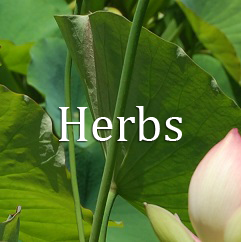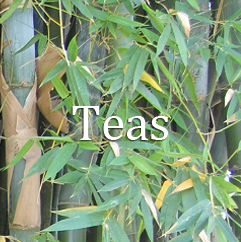Cool down the effect of hot spices like ginger with two spices that are cool and lessen the affects of heating spices: fennel and star anise. They have a taming influence on very hot spices. Did you know that the flavor of licorice flavor can be conjured from these two spices? In Chinese herbal medicine, star anise is one of the herbs in formulas to soothe the stomach. Its got a sweet nature.
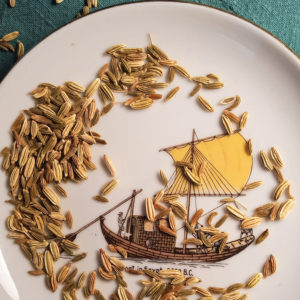 |
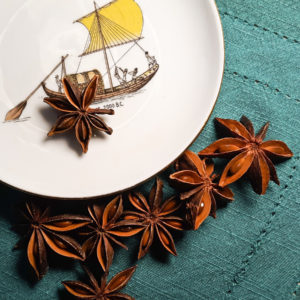 |
They look nothing alike, yet have a similar taste. Sometimes you’ll find both in a recipe, compounding the flavor they impart. Interestingly, fennel and star anise are used in remedies, both homestyle and traditional.
Fennel seed comes from a Mediterranean perennial green plant that grows everywhere around the world as an escaped garden plant. It’s not an exotic spice, but has the flavor of licorice. Fennel was adopted by cultures in many climates where the taste of licorice for its sweet and bright taste is an important ingredient in their spice blends.
Star anise is known in Chinese traditional medicine, fennel in Western herbalism.
Star anise comes from a tree native to Southeast Asia, and used in Chinese traditional medicine as a stimulant and to resolve digestive issues such as gas and bloat.
A variation on chai without black pepper mixes fennel or star anise into the masala. Comparing the taste of the chais I tried from Nira Kehar and Kate O’Donnell, I found a very classic recipe.
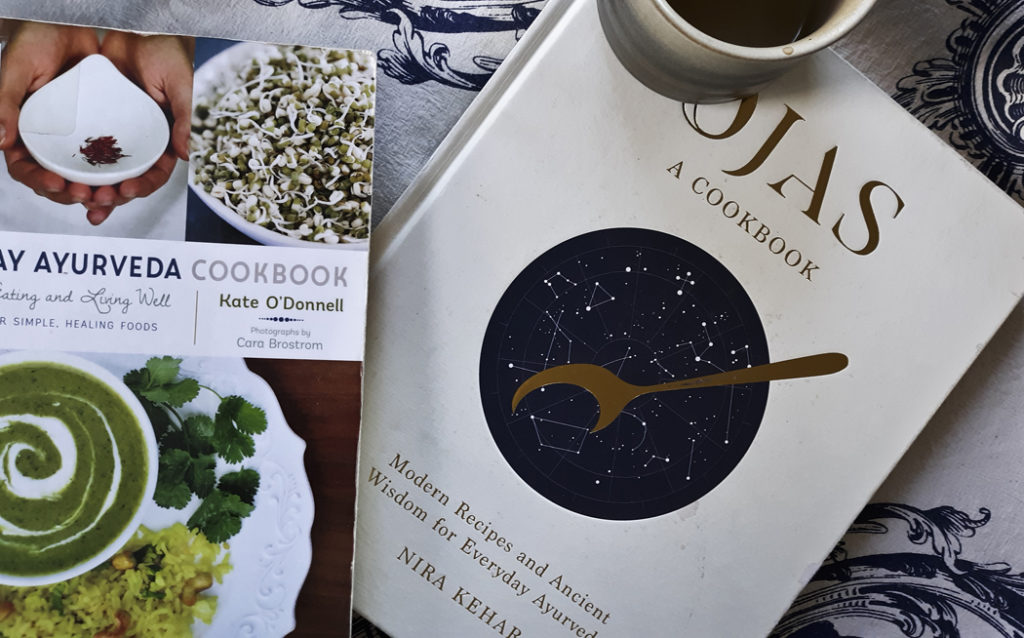
The Everyday Ayurveda Cookbook by Kate O’Donnell (Shambhala Publications, 2015) is a collection of recipes for main dishes, sides, snacks, desserts and drinks for each of the four seasons. Plus the spice blends that make everyday food taste so good you want nothing better to eat than what you can prepare in your home kitchen.
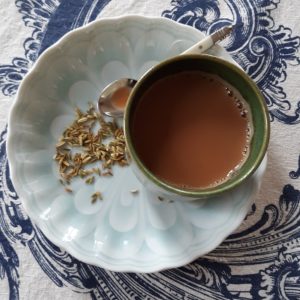
O’Donnell suggests simmering the black tea briefly. That way, there’s less astringency in the chai. I know black tea has a tendency to overtake the flavor of spices, even the heat of ginger. I really dislike the tannin taste in tea! So when I make this recipe, I simmer the tea-in-the-chai mixture for only 3 minutes. Finally fennel seeds are freshly ground and thrown in after the cooking time. The warmed mixture of all the ingredients is allowed to rest in a covered pan for at least another 3-5 mins. Then, the chai has a delicate licorice-like complexity.
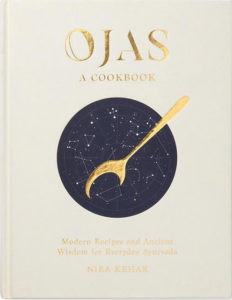 Ojas, a cookbook: modern recipes and ancient wisdom for everyday Ayurveda by Nira Kehar (Dovetail Press, 2018) is a beautifully inspired and artistically designed cookbook. Inside are recipes for anyone—omnivore to vegan—wishing to eat food prepared for the tastebuds, and the soul. Influenced by French as well as Indian cuisines, Kehar opened her restaurant in Delhi. Her innovative and inventive menu featured unusual pairings with an international flair and had its roots in Ayurveda. And these became the basis for Ojas, a cookbook.
Ojas, a cookbook: modern recipes and ancient wisdom for everyday Ayurveda by Nira Kehar (Dovetail Press, 2018) is a beautifully inspired and artistically designed cookbook. Inside are recipes for anyone—omnivore to vegan—wishing to eat food prepared for the tastebuds, and the soul. Influenced by French as well as Indian cuisines, Kehar opened her restaurant in Delhi. Her innovative and inventive menu featured unusual pairings with an international flair and had its roots in Ayurveda. And these became the basis for Ojas, a cookbook.
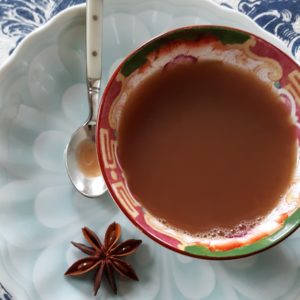
Tea, sugar and milk (she uses almond milk, not dairy) are added when the heat is turned off. This allows for a few minutes of mutual infusion—the cooked spices with the tea, sweetner and milk. The mixture is strained and poured into cups to serve.
You can make a decent chai masala with just three spices—cinnamon, cardamom, and ginger. However, if you want to get more elaborate with a recipe, the swankier your chai will be! A few spices can be swapped in/out for cooling effects, less sugary effects, or a unique flavor. Consider adding a licorice flavor that besides the trio already mentioned above are also part of Kehar’s and O’Donnell’s recipes.
I feel that fennel is a bit shy, or at least its note is delicate compared with ginger and cardamom. Added in with all the spices only to be boiled or decocted, fennel fails to impress me as an alternative-to-licorice taste. In fact, it was almost undetectable using this method. However, if the fennel is crushed or ground in a spice grinder and added at the end of cooking, its flavor is recognizably pleasant! And fennel likes cinnamon, so having fennel in your chai makes a real bridge of flavors from hot and pungent to warm and sweet.
There are many delicious combinations with spices. One is turmeric, ginger and black pepper… see more here.
Follow